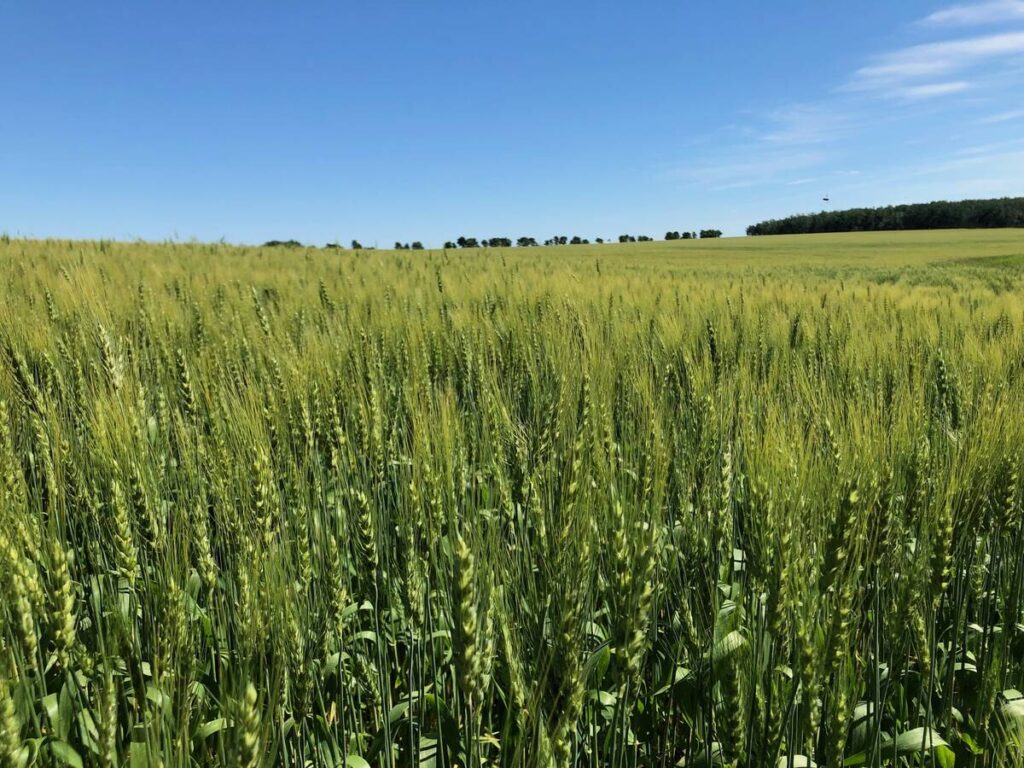Getting greener: How Prairie cereals have reduced their carbon footprint

Glacier FarmMedia – The national body representing Canada’s cereal supply chain is turning a spotlight on the work this country’s grain growers have done to ensure sustainability.
Cereals Canada released several reports earlier this year highlighting the relatively small environmental footprint of Canadian wheat, durum, barley and oats compared to other top-producing countries.
“Canada is a global leader in the production of high-quality, nutritious, and sustainable cereal grains,” says Mark Walker, Cereals Canada’s vice-president of markets and trade.
Read Also


A seeding season of uncertainty ahead in U.S. trade
As farmers begin to seed Alberta’s 1.5 million acres of irrigated land this growing season, it is full steam ahead regardless of the uncertainty of the trade wars ahead.
“These reports confirm that Canadian farmers grow some of the most sustainable crops in the world.”
The reports stack Canada up against Australia, France, Italy, Sweden and the United States, tracking six sustainability indicators: carbon footprint, soil health, fertilizer use, irrigation, pesticides and erosion.
By those measures, Canadian cereals consistently outperform those of other top-producing countries.
Canadian wheat production has a lower carbon footprint compared to the U.S. and Australia, largely due to soil organic carbon sequestration. The report notes Canadian cropland acts as a CO2 sink, capturing an average of 14.2 million tonnes annually over the past five years.
Additionally, Canadian wheat is high in quality and protein, with farmers producing the highest protein yield per acre, resulting in a low carbon footprint per kilogram of protein.
Canadian farmers do a better job of tailoring nitrogen fertilizer application to optimize high-protein wheat growth while balancing environmental concerns than some of their competitors.
Irrigation is minimal because most wheat is grown under dryland conditions, requiring less water than in the U.S. or Australia.
Conservation practices such as no-till management, crop rotation and cover cropping help sequester carbon.
Vegetative buffer strips are also reducing soil erosion. As a result, more than 80 per cent of Canadian cropland has “very low risk” of erosion, with soil erosion rates below 2.5 tonnes per acre per year.
“It’s a great time for Canadian farmers to be able to really be proud of all of the sustainable practices that they’ve adopted over time,” says Krista Zuzak, director for crop protection and production with Cereals Canada.
While the reports are comparative of the outcomes in terms of sustainability, they also separate out the specific practices or technologies that are making a difference, Zuzak says.
Canada’s more widespread adoption of zero-till farming practices, for instance, has been one of the most important factors in Canada’s success in sequestering soil organic carbon.
The reports talk about the Saskatchewan-based Prairie Soil Carbon Balance Project, which has been monitoring agricultural soil across the province that had been converted from conventional tillage to no-till. The project found soil organic carbon has been rising in those fields.
“Soil health has become a big focus,” Zuzak says.
“That’s been a driver in recent years: research on soil health and productivity, thinking about what’s going on under the crop, not just what’s happening with the crop itself.”
The report also discusses fertilizer efficiency.
Fertilizer application rates are generally higher in Canada than in Australia or the U.S. because Canadian wheat is grown for high protein levels. However, in terms of efficiency, Canada again punches above its weight.
The report notes that, compared to the rest of the world, Canada is one of the world leaders in nutrient use efficiency, with an average nitrogen use efficiency of approximately 51 per cent, well above the global average of 35 per cent.
Just days before the Canadian reports dropped, the U.S.-based National Association of Wheat Growers released a comprehensive study analyzing the sustainability of U.S. wheat production. That study, which covers data from 1978 to 2023, highlighted substantial reductions in greenhouse gas emissions, energy consumption, water use, land use and soil erosion over the time period.
Against that backdrop, the fact that Canadian wheat production outscored U.S.-produced wheat emphasizes the significance of the findings in the Cereals Canada reports.
Andrew Hector, an agronomist with the Manitoba Crop Alliance, says the reports show the importance of buy-in from Canadian farmers.
“Farmers from across Western Canada have been willing to embrace these technologies and adopt these innovations to increase efficiencies and reduce costs,” he says.
Hector points out that early adopters — those willing to test new concepts such as cover cropping or emerging crop varieties — play a key role in driving broader adoption. Their willingness to experiment has contributed to Canada’s success in sustainable agriculture.
“Understanding what works best on your farm, and trying to continue to move that needle, is what will keep Canada’s sustainable edge,” he says.
However, Hector says he’d like to see more farmers adopt GPS technology and sectional control. The technology improves crop production and reduces waste by ensuring crop protection products aren’t over-applied and areas aren’t over-seeded.
“It’s one of the technologies that are a bit under-recognized,” he says.
“But GPS technology can save money and improve the overall sustainability.”
For Zuzak, there’s still room to fine-tune decisions based on factors such as wheat variety selection or soil differences.
“That really can drive those best management practices that the farmers are using; what might work in one region might be slightly different than what works in another,” she says.
“Some of these are more long-term adoptions, things that have evolved more slowly.”
Every five years, Cereals Canada updates its National Wheat Research Priorities, an initiative developed in partnership with Agriculture Canada. Its 2023–28 priorities include cropping system sustainability, which emphasizes sustainable wheat rotations, maximizing input efficiency and improving decision-making tools that enhance wheat crop sustainability.
“Growers really do understand the importance of crop rotations as part of their best management practices and their role in sustainability,” Zuzak says.
“But a theme around research for cropping systems sustainability also demonstrates the role that we can play.”
Those research priorities also emphasize the importance of improving disease and pest resistance, an area where significant progress has already been made. Breeding efforts are cutting the need for pesticide applications while helping maintain strong yields and crop quality.
“We’re looking forward to having one of the first varieties with ergot resistance in the coming years,” Zuzak says.
“That will allow growers to use fewer pesticides, which supports sustainability — not just in producing the crop but also in reducing inputs.”
While these advancements are significant, there is still room for improvement. Zuzak points to emerging technologies that will be key in addressing ongoing challenges, particularly with rising herbicide resistance and changing climates.
Gene editing, for example, has the potential to accelerate breeding timelines, making it possible to develop more resilient varieties faster.
“Once gene editing is fully adopted and accepted in the marketplace, we could see faster response times when new challenges arise,” Zuzak says.
“That means growers could get new varieties onto their farms even faster.”
Source: www.producer.com


